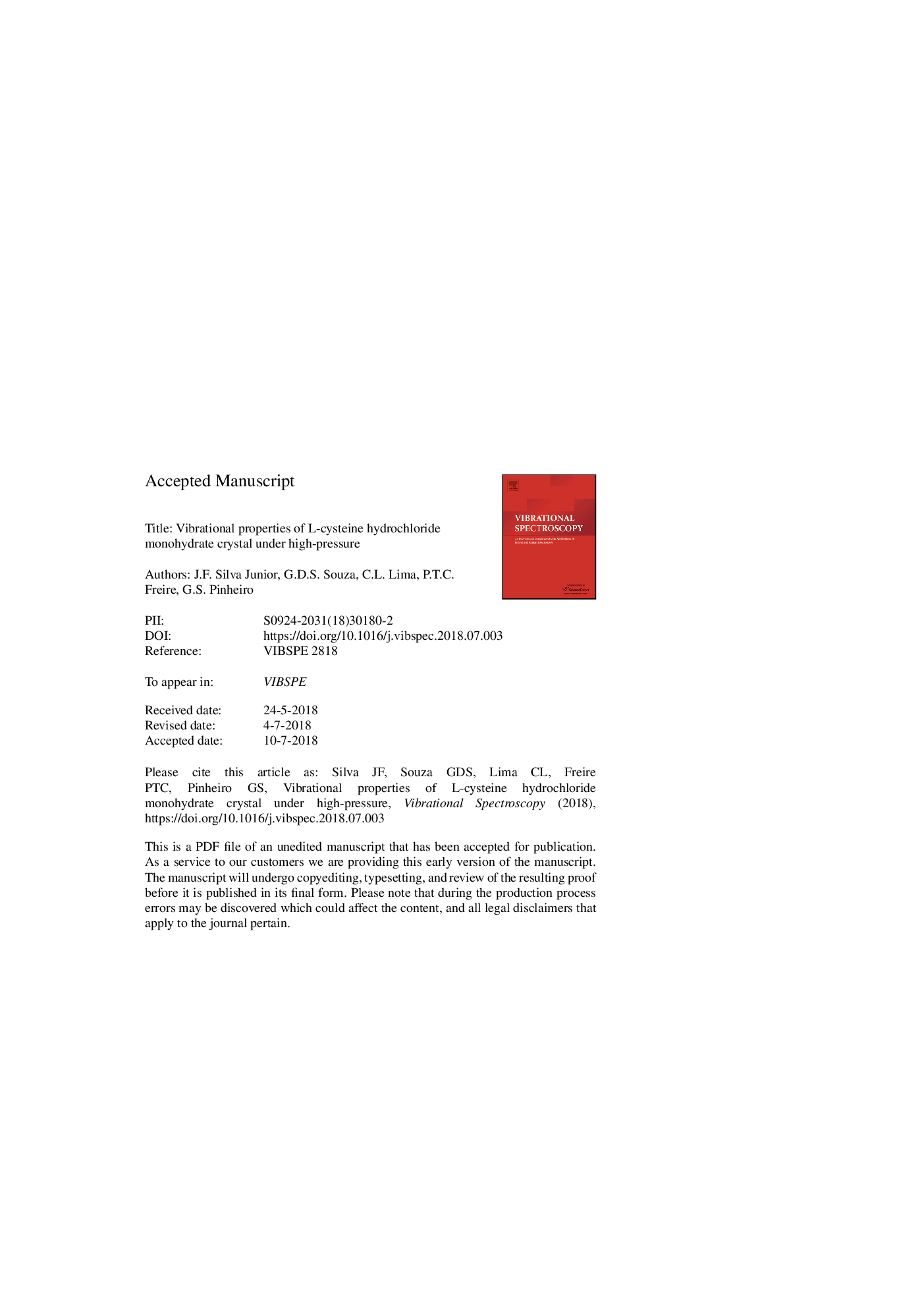| Article ID | Journal | Published Year | Pages | File Type |
|---|---|---|---|---|
| 7690556 | Vibrational Spectroscopy | 2018 | 19 Pages |
Abstract
L-cysteine hydrochloride monohydrate crystals, C3H7NO2S·HCl·H2O, were studied by Raman spectroscopy as a function of pressure in a diamond anvil cell up to 6.2âGPa in the spectral range 3500â30 cmâ1. From the analysis of the results, we inferred that the crystal is structurally stable in this pressure range. Some changes on the Raman spectra were observed for bands related to vibrational modes of the SH, NH3+, CH2, CCN, OH and COH units. These modifications were associated with conformational changes of the molecules in the unit cell undergone at high pressures. Comparing this behavior with those of L-cysteine, DL-cysteine and L-cysteine hydrochloride crystals in the same pressure range, we note greater stability for the hydrochloride monohydrate form. In the L-cysteine hydrochloride monohydrate crystal, the chloride ion and water molecule play an essential role in increasing the number of the hydrogen bonds, improving the structural stability of the crystal.
Keywords
Related Topics
Physical Sciences and Engineering
Chemistry
Analytical Chemistry
Authors
J.F. Silva Junior, G.D.S. Souza, C.L. Lima, P.T.C. Freire, G.S. Pinheiro,
